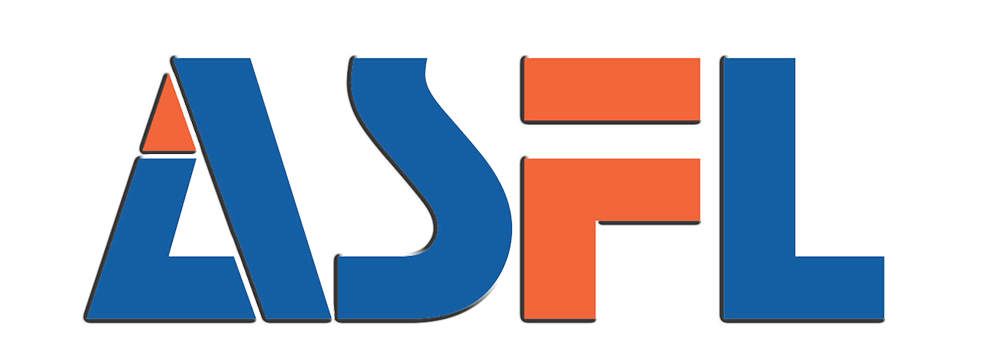What Is a Water Bottling Line and How Does It Work?
Water bottling lines bring together all sorts of machines that clean, fill, put caps on, and package bottles automatically. The really good ones can crank out over 6,000 bottles every hour according to Advanced Dynamics from 2024, and they still meet those strict ISO 22000 food safety rules about cleanliness. At the heart of these operations sits the actual filling machine. It works hand in hand with conveyors and various sensors to make sure each bottle ends up in the right spot, gets filled with just the right amount of liquid within about 1% accuracy, and has a proper seal. Looking at what's happening in the industry lately, studies show that completely automatic systems now need only 15% of the human help required by older semi-automated setups. That's quite a jump forward in efficiency.
Key Stages in the Bottled Water Production Process
- Bottle Sanitization: High-pressure air and sterile water remove contaminants
- Precise Filling: Volumetric or gravimetric systems fill 500ml–2L containers at 150–400 BPM
- Seal Validation: Torque-controlled cappers apply 8–12 N·m of force for leak-proof closures
- Labeling & Coding: Vision systems verify 99.7% label placement accuracy before packaging
The integration of bottle rinsers and fillers in modular setups allows manufacturers to adapt production between still and sparkling water formats within 45 minutes–a 60% improvement over legacy systems.
Integration of Filling, Capping, and Sealing in Modern Lines
Advanced PLC controllers synchronize three critical subsystems:
| Subsystem | Tolerance | Speed Benchmark |
|---|---|---|
| Filling | ±0.5% volume | 450 BPM |
| Capping | ±2% torque | 400 BPM |
| Quality Checks | 50ms/image | 600 BPM |
This tight integration reduces product loss from 3.2% to 0.8% in audits of GMP-certified facilities, while dual-track conveyors enable simultaneous processing of multiple bottle sizes without downtime for tooling changes.
Water Bottle Filling Machine: Types, Systems, and Efficiency
Types of Filling Machines Used in Water Bottling Lines
Water bottle filling equipment these days generally comes in three main types: gravity, pressure, and vacuum systems. The gravity fillers work by letting liquids flow naturally into bottles, making them great for things like still water and light juices. Pressure systems push liquid into containers using compressed air, which works well for fizzy drinks since they need that extra force. Then there are vacuum fillers that suck liquid up into bottles instead of pouring it in. These are especially useful when dealing with fragile glass bottles where spills would be a problem. Another type gaining popularity lately is automated volumetric fillers. These machines use pistons to measure out exact amounts of product, something that matters a lot in fast paced production lines where consistency is key.
Gravity, Pressure, and Vacuum Filling Systems Compared
The choice between filling systems hinges on product viscosity, container type, and production speed. Here’s a performance comparison:
| System | Method | Best Use Cases | Throughput Efficiency |
|---|---|---|---|
| Gravity | Utilizes natural liquid flow | Still water, thin juices | Moderate |
| Pressure | Forces liquid via compressed air | Carbonated beverages | High |
| Vacuum | Draws liquid using suction | Glass bottles, delicate containers | Moderate |
Pressure systems dominate carbonated drink lines for their anti-foaming capabilities, while vacuum fillers reduce oxidation risks in premium packaging.
Advanced Filling Techniques for Precision and Speed
Cutting-edge technologies like servo-driven fillers and touchless nozzle arrays now achieve fill accuracies of ±0.5 mL at speeds exceeding 12,000 bottles per hour. Sensors monitor viscosity changes in real time, automatically adjusting flow rates to maintain consistency–a critical feature for lines handling both spring water and vitamin-enriched variants.
Design and Efficiency Metrics of the Filling System in Water Bottling Machines
Key performance indicators include:
- Throughput: Measured in bottles per hour (BPH), with industrial systems exceeding 50,000 BPH
- Fill accuracy: Top-tier machines achieve 99.8% volume consistency (ISO 9001 standards)
- Energy use: Variable-speed drives cut power consumption by 30% compared to fixed-speed models
Modular designs allow swift reconfiguration between bottle sizes, reducing changeover downtime by 70% in smart factories.
Integrating Bottle Filling and Capping on Automated Lines
Water bottle filling equipment runs at its best when connected to capping systems that work together smoothly. These systems rely on advanced control panels called PLCs to manage different parts of the process. The controllers adjust how fast the nozzles fill bottles so they line up just right with the spinning caps, all within about a quarter of a second difference. When everything works together like this, there's no need for people to handle the bottles between steps. According to research published in Food Safety Journal last year, this setup cuts down on contamination problems by almost four out of five cases. Plus, most companies report that their seals hold up really well too, with over 99 percent staying intact even after thousands of 500ml plastic bottles pass through the line.
Role of Conveyor Systems in Streamlining the Filling Process
Roller conveyors moving at high speed with those auto-centering guides can shuttle bottles from one station to another pretty fast around 2.5 meters per second. The system keeps about 2 inches between each bottle so the filling and capping processes stay consistent throughout production runs. There are sensors along the line that spot when things start getting backed up, then tweak the speed of the conveyor belts just enough to keep everything flowing smoothly without any jam ups. Many top manufacturers have seen their output jump by roughly 40 percent once they switched over to these smart conveyor systems powered by artificial intelligence. These advanced setups actually figure out potential alignment problems long before they become actual disruptions on the factory floor.
Case Study: High-Speed Line Achieving 6,000 Bottles per Hour
A North American bottler achieved record output using interconnected rotary fillers and magnetic cappers. Key optimizations included:
- Quick-Change Tooling: 5-minute format switches between 12oz and 1L bottles
- Torque Monitoring: 48 wireless sensors ensuring 12–14 Nm cap tightness
- Buffering Zones: Intermediate storage compensating for 0.8-second filler/capper cycle differences
This configuration reduced downtime by 62% while maintaining 6,000 bottles/hour output across 18-hour shifts.
Common Bottlenecks in the Filling and Capping Process
Even with all the automated systems in place, around one third of production lines still run into problems regularly such as when the liquid gets too thick causing incorrect fill levels or those pesky caps that just won't align properly. Looking at recent numbers, roughly a fifth of unexpected shutdowns happen because the water bottle filler isn't working hand in glove with what comes next in line for capping. Some companies are trying out new approaches though. Things like adjusting torque settings before problems occur and using robots to handle cap feeding have shown pretty impressive results in test runs, boosting the percentage of bottles that pass quality checks on the first go from whatever it was before up to nearly 95% in some cases.
Capping Machine Technology and Seal Consistency
Types of Capping Machines in Water Bottling Plant Operations
Water bottling plants typically use three main types of capping systems these days: spindle, chuck, and magnetic cappers. Spindle machines are the workhorses for fast production runs, spinning their heads around to put on those twist-off caps at speeds that can hit over 1,200 bottles every single minute. When dealing with oddly shaped caps though, chuck cappers tend to perform better because they have these spring loaded parts that adjust nicely to different cap shapes and sizes. Then there's magnetic cappers which really shine when working with those light weight PET bottles. These systems use magnets instead of actual touching parts to get the caps properly seated and tightened down, which means less wear on equipment and fewer chances of getting contaminants into the product during the process.
Torque Control and Alignment in the Capping System
Getting the right amount of torque is essential for creating seals that won't leak and keeping bottles from getting damaged during processing. Modern equipment now comes with servo motors and sensor tech that can hold torque within about 0.1 Newton meters, which actually matters a lot if companies want to pass those FDA inspections and meet ISO quality requirements. Some research published last year showed that switching to automatic torque settings cuts down on failed seals by around thirty percent compared to what happens with manual adjustments. The machines also have these dual axis guides that help keep caps straight even when dealing with fast moving bottles on production lines going faster than two meters per second.
Magnetic, Spindle, and Chuck Cappers: A Performance Comparison
- Magnetic Cappers: Achieve 99.8% seal consistency on threaded caps (under 38mm diameter) but require frequent calibration for high-viscosity products.
- Spindle Cappers: Deliver speeds up to 1,500 bottles/hour with <0.5% torque deviation, though they struggle with non-round caps.
- Chuck Cappers: Ideal for sports caps and child-resistant closures, offering 95% alignment accuracy but 15% slower cycle times than spindle models.
Operators often combine these technologies–for example, using magnetic cappers for standard bottles and chuck systems for specialty closures–to balance throughput and flexibility.
Automation, Quality Control, and Industry Standards in Modern Bottling Lines
How Automation Enhances Filling, Capping, and Labeling Efficiency
Today's water bottle filling equipment makes use of robotics along with those PLCs we all hear about these days, making sure that filling, capping, and labeling happen exactly when they should. The automated production lines run about 30% quicker compared to old fashioned manual setups because there are fewer delays moving from one step to another. Take servo driven cappers for instance they tweak the torque on the fly so those standard 48mm caps get sealed properly most of the time according to Packaging Digest from last year. Around 99.8% accuracy sounds pretty good actually, though no system is ever going to hit 100% perfection.
IoT and Predictive Maintenance in Smart Bottling Line Components
Integrated IoT sensors monitor equipment health across 120+ parameters, from motor vibrations to hydraulic pressure. This data enables predictive maintenance models that reduce unplanned downtime by 65%. A 2023 study found IoT-enabled lines maintain 98.5% operational efficiency through real-time adjustments to production variables like bottle geometry changes.
Vision Systems and Sensors for Real-Time Quality Monitoring
High-speed cameras inspect 1,200 bottles/minute for:
- Fill level accuracy (±1.5ml tolerance)
- Cap alignment defects (≤0.2mm offset)
- Label placement errors (<1° rotation variance)
Infrared sensors simultaneously verify seal integrity by detecting micro-leaks as small as 5¼m.
Compliance with Safety and Quality Standards in Filling and Capping Processes
Automated systems enforce FDA 21 CFR Part 129 and ISO 22000 requirements through:
- Digital batch records tracking 100% of production parameters
- Automated rejection of non-compliant bottles (0.1% false-positive rate)
- Sterilization cycles validated to 6-log pathogen reduction
This integration reduces contamination risks by 92% compared to semi-automated lines (Food Safety Magazine 2023).
FAQ
What is the main function of a water bottling line?
The main function of a water bottling line is to automatically clean, fill, cap, and package bottles of water efficiently and hygienically.
How do modern bottling lines improve efficiency?
Modern bottling lines improve efficiency by using automation which reduces human input, advanced PLC systems to synchronize filling and capping, and utilizing IoT technology for predictive maintenance.
What types of filling systems are used in water bottling lines?
The main types of filling systems used are gravity, pressure, and vacuum systems, each suited to different types of beverages and container types.
What role do conveyor systems play in bottling lines?
Conveyor systems speed up the process by efficiently moving bottles through each stage, maintaining distance and preventing backlogs, thus facilitating high-speed production runs.
What are the common bottlenecks in the bottling process?
Common bottlenecks include problems with fill levels due to liquid viscosity, cap alignment issues, and unplanned downtimes due to equipment malfunctions.
Table of Contents
- What Is a Water Bottling Line and How Does It Work?
- Key Stages in the Bottled Water Production Process
- Integration of Filling, Capping, and Sealing in Modern Lines
- Water Bottle Filling Machine: Types, Systems, and Efficiency
- Integrating Bottle Filling and Capping on Automated Lines
- Role of Conveyor Systems in Streamlining the Filling Process
- Case Study: High-Speed Line Achieving 6,000 Bottles per Hour
- Common Bottlenecks in the Filling and Capping Process
- Capping Machine Technology and Seal Consistency
- Automation, Quality Control, and Industry Standards in Modern Bottling Lines
- FAQ





